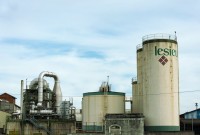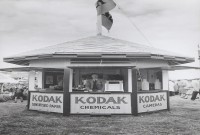- Home
- Business Processes
- Industry Knowledge
- Aerospace Industry
- Automotive Industry
- Banking Domain
- BFSI Industry
- Consumer/ FMCG Industry
- Chemicals Industry
- Engineering & Construction
- Energy Industry
- Education Domain
- Finance Domain
- Hospitality Domain
- Healthcare Industry
- Insurance Domain
- Retail Industry
- Travel and Tourism Domain
- Telecom Industry
- Leadership Skills
- eLearning
- Home
- Domain Knowledge
- Chemicals Industry
- Business Model & Value Chain of Chemicals Industry
Business Model & Value Chain of Chemicals Industry
Understand the three critical business models applied by the Chemicals Industry to create value for its customers; asset-driven business model, integrated business model, and specialties business model. This article also explains the chemical industry value chain and provides some practical examples for a better understanding.
Various Business Models in Chemical Industry:
The chemical industry is one of the largest and most diversified industries in the world, made up of companies that use raw materials to produce chemicals used by consumers and other industries. It consists of several small industries that cover hundreds of segments. Well-known players in the chemicals industry have different strategies for offering value. Some are involved only in finding and selling oil and natural gas, while others create basic chemicals and polymers. Others focus on producing specialty chemicals. The industry applies three main business models to create value for its customers:
- Asset-Driven Business Model
- Integrated Business Model
- Specialties Business Model
Business Model 1: Asset-Driven Business Model:
The players using this business model to explore or buy oil/gas and refine it into petrochemicals and other basic chemicals. Access to raw materials is a critical success factor. The asset-driven business model generally applies to the commodity chemicals sector. This business model revolves around creating value by refining raw materials into other products, such as oil and gas into petrochemicals and other basic chemicals.
In petrochemicals, many of the largest asset-driven players are in the Middle East. These resource-owners are using their financial and natural resources to become global petrochemical producers. They have access to significantly discounted oil and gas reserves, which gives them a competitive advantage. Basic chemical plants focus on getting the greatest output from their assets and tend to be at the highest level of operational excellence to derive value. Similarly, commoditized products need efficient manufacturing sites that can produce large volumes at low costs.
For the players in the chemical industry that deploy asset-driven business models, their success is highly dependent on access to low-cost feedstock. Edge lies the inability to manufacture at the lowest possible cost and enabling the globalization of supply chain capability. Some of the players are exploring the opportunities to “move up the value chain” into polymers and/or specialties.
Business Model 2: Integrated Business Model:
Players operating under an integrated business model go one step further “downstream” in the value chain into the production of polymers besides refining oil and providing basic chemicals. Some of them might also have “specialty” divisions. This integrated business model applies to companies that provide petrochemicals and basic chemicals, as well as polymers. Under this business model, value is created by refining oil and gas into petrochemicals and basic chemicals, as well as using these basic chemicals to create specialty chemicals that have specific functions.
Integrated players have a stake in each part of the chemicals market including basic chemicals, polymers, and specialties. They tend to derive value from business models comprising of various combinations of basic chemicals, polymers, and specialties. Some critical success factors under this business model are innovation, customer intimacy, globalization of the supply chain capability, and complexity management.
Business Model 3: Specialties Business Model:
These players buy intermediate products (i.e., basic chemicals or polymers) and process them into specialty products related to specific functionalities. Some of them are focused on a niche market. Others are more broad-based. The specialties business model involves using petrochemicals, basic chemicals, and polymers in order to develop and produce products with specific functions.
This business model allows companies to create value by developing petrochemicals and basic chemicals into specialty chemicals. Specialty products are produced in smaller batches at different locations in order to meet customer needs in a flexible way. Specialty players are currently operating in a very fragmented market and a higher level of business complexity that needs to be managed.
The Chemical Life Cycle:
The chemical life cycle begins with the extraction of raw materials which includes mining, extraction of oil and natural gas, minerals, ores, and other activities. These raw materials are then used in chemical manufacturing, processing, or refining. Manufactured bulk chemicals are then combined with one another and used to make a wide variety of downstream chemical products. These chemical products may, in turn, be used as feedstock for chemical products further downstream; may be used for a variety of industrial activities and services as individual chemicals or in preparations, or may be used to make consumer products. At the end of the life cycle, chemicals may be released into the environment, recycled for continued use, disposed of in hazardous waste facilities, or disposed of in other ways.
Chemicals Industry Value Chain:
A value chain is a chain of activities that a firm operating in a specific industry performs in order to deliver something valuable (product or service). Products pass through activities of a chain in order, and at each activity, the product gains some value. The chain of activities gives the product more added value than some of the independent activities' values. The value chain for the chemicals industry starts from “petrochemicals” and matures into “basic chemicals” and further develops into “polymers” and specializes in “specialties”.
Oil & Gas/Raw Materials >Petrochemicals/Raw Materials >Basic Chemicals > Polymers à Specialties > Marketing/Distribution/Sales
At each step of this value chain, the products become more complex and varied. Value is added during each step of the chain. Let’s explore these steps to have a comprehensive understanding of the value chain:
Value Chain: Step 1: Raw Materials/Petrochemicals:
Raw Material is the first step of the value chain. Raw materials are used to manufacture basic chemicals. These raw materials are mainly metallic or non-metallic minerals and ores, oils, and natural gas extracted and beneficiated from mining. Value-added activities are performed on these raw materials to obtain basic chemicals. This step mainly involves raw material procurement, R&D, development, and patenting of new innovative chemicals and chemical processes. The first step usually involves the refining of oil and gas (or some other type of raw mineral) into petrochemicals. Petrochemicals are derived from crude oil, crude products, or natural gas. Petrochemicals are used in the manufacture of numerous products such as synthetic rubber, synthetic fibers (e.g., nylon and polyester), plastics, fertilizers, paints, detergents, and pesticides. It is the basis for most organic chemistry. Products manufactured during this step include olefins, such as ethylene and propylene, polyolefins, such as polyethylene and polypropylene, and industrial gases.
Value Chain: Step 2: Basic Chemicals:
The second step of the value chain produces basic chemicals. Base/Basic Chemicals Processing is the second step in the chemicals industry value chain. In this step, basic chemicals are produced from raw materials. These basic chemicals are used by many manufacturers as raw materials from different industries to manufacture a wide variety of commercial products such as dyes, detergents, chemicals for household cleaning, plastics materials, paints, drugs, and fertilizers. Basic chemical processing includes synthesis, distillation, thermal cracking, and polymerization. Basic chemical processing is performed by chemical manufacturers and is closely tied to R&D activities. Products manufactured during this step include intermediates, such as tetrahydrofuran and hexamethylene diamine, and inorganics, such as ammonia.
Value Chain: Step 3: Polymers:
The third step involves the manufacturing of polymers. Polymers, which are principally used to make plastic goods, constitute about 80% of the chemical industry’s production output. In fact, polymers are the most widely used material per unit volume, being used more than steel, copper, and aluminum combined. Polymers are used by industry (e.g. in manufacturing film and in manufacturing aerospace, automotive, and electronic equipment) and by the general public (e.g. in the milk and shampoo bottles). Polymers are used in products from plastic bottles to plexiglass. Polymer manufacturing is a hybrid of batch and continuous processing. Polymer manufacturing plants are typically very large, capital intensive, costly to operate, and difficult to change.
Raw materials for polymers often referred to as ‘feedstock’, are by-products of petroleum or natural gas production such as ethylene and propylene which is generally produced in the value chain step 2. Polymer customers are typically manufacturers that process the polymer into plastic products (e.g. plastic containers such as milk and shampoo bottles), which are then sold to other manufacturers (e.g. consumer-packaged-goods companies), which are in turn filled with a consumer product (e.g. milk or shampoo) and sold to retailers. The final users are thus fourth-tier customers. Other polymer customers produce parts that will be used in electronics or aerospace equipment.
Value Chain: Step 4: Specialties:
The most complex chemicals are produced during the fourth step known as specialties. Specialty chemicals are used for a variety of purposes and include additives, coatings, pharmaceuticals, and vitamins. Fine chemicals are complex, single, pure chemical substances. They are produced in limited volumes and at relatively high prices mainly by the traditional organic synthesis in multipurpose plants. Fine chemicals are used as starting materials for specialty chemicals, particularly pharmaceuticals, biopharmaceuticals, and agrochemicals. The products are mainly used as building blocks for proprietary products.
Marketing, Distribution, and Sales of Final Products is the next step in the value chain. This includes the marketing, wholesale distribution, and sales of the final chemical product and allied products to other manufacturers in the Agriculture, Automotive, Pharmaceuticals, and Textile industries. The manufacturers from different industries then produce different consumer goods and products using the final chemical product.
Related Links
You May Also Like
-
Business Model & Value Chain of Chemicals Industry
Understand the three critical business models applied by the Chemicals Industry to create value for its customers; asset-driven business model, integrated business model, and specialties business model. This article also explains the chemical industry value chain and provides some practical examples for a better understanding.
-
Overview of Chemicals Industry
The chemical industry is critical for the economic development of any country, providing products, and enabling technical solutions in virtually all sectors of the economy. This article provides an overview of the chemical industry, explaining the definition and processes in the chemical domain. Read about the various segments of the chemical industry and what they do. A brief discussion on the major players in the chemical domain and their impact on the global and US economy.
-
Industry trends are examined to make predictions. This article discusses the trends in the chemicals industry including trends related to consumer behavior, employment, technological advancements, new product development, competition, government norms, and other factors that impact the industry.
-
Fundamentally, the chemicals industry can be divided into two sectors; commodity/basic chemicals and specialty chemicals. Commodity chemicals are manufactured by many different companies however the end product is generally the same with very little variations. There exist other segmentations for this industry as well. Understand the main sectors of the chemical domain.
-
This article provides a concise history of the chemicals industry. How the chemical industry progressed and changed over time. Explore the journey of the Chemical industry from the early ages to the twenty-first century. Chemicals have been manufactured for thousands of years. The history of the chemicals industry can be traced back to ancient times when alkali and limestone were combined to make glass, and sulfur and saltpeter became an explosive that is similar to modern gunpowder.
-
Chemicals Industry’s Supply Chain
This article explains the chemical industry supply chain and addresses key questions like the importance of supply chain management and why the chemicals industry needs to focus on supply chain management. Understand the key factors influencing the supply chain for the chemicals industry and strategies to overcome the current challenges.
-
Importance / Impact of Chemicals Industry
Chemical Industry is engaged in the development, optimization, and monitoring of fundamental chemical processes used in industry for transforming raw materials and precursors into useful commercial products for society. Learn more about the importance and impact of the chemical industry on agriculture, environment, hygiene, food, painting, etc.
Explore Our Free Training Articles or
Sign Up to Start With Our eLearning Courses

About Us
Learning
© 2023 TechnoFunc, All Rights Reserved







